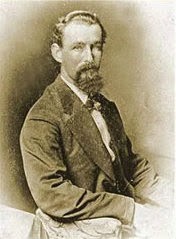By Kathleen Rice Adams
Once again I find myself without a book review for my regularly scheduled post. I still occupy my free time with reading; sadly, my free time has dwindled to next to nothing lately. Contrary to what one might suppose, writing in-depth reviews is neither quick nor easy. I'll do my best to return to reviewing on Aug. 25.
In the meantime, I hope y’all will enjoy something a little different. A version of the post below appeared on the Prairie Rose Publications blog in January.
Texas always has been a rowdy place. In 1822, the original Anglo settlers began invading what was then Mexico at the invitation of the Mexican government, which hoped American immigrants would do away with the out-of-control Comanches. Texans dispensed with the Comanches in the 1870s, foisting them off on Oklahoma, but long before that, the Texans ran off the Mexican government.
From 1836 to 1845, Texas looked something like the map above. The green parts became the Republic of Texas as the result of treaties signed by General Antonio Lopez de Santa Ana after Sam Houston and his ragtag-but-zealous army caught the general napping at San Jacinto. The treaties set the boundary between Texas and Mexico at the Rio Grande.
This caused a bit of a fuss in the Mexican capital, because Santa Ana did not possess the authority to dispose of large chunks of land with the swipe of a pen. Mexico eventually conceded Texas could have the dark-green part of the map, but the light-green part still belonged to Mexico. Arguments ensued.
While Texas and Mexico were carefully avoiding one another in the disputed territory, outlaws, rustlers, and other lawless types moved into a patch between the Nueces River and the Rio Grande. After all, no respectable outlaw ever lets a perfectly good blind spot on the law-enforcement radar go to waste. The area, 150 miles wide by about 400 miles long, came to be known as the Nueces Strip.
In 1845, the United States annexed all of the land claimed by Texas, including the disputed territory, and came to military blows with Mexico over the insult. By the time the two countries signed the Treaty of Guadalupe Hidalgo in 1848 to settle once and for all (sort of) who owned what, the lawless element was firmly entrenched in the strip of cactus and scrub between the Nueces and the Rio Grande. For nearly thirty years, brigands raised havoc, robbing, looting, raping, rustling, and killing on both sides of the border before retreating to ranchos and other hideouts in the no-man’s land on the Texas side.
 |
| Leander H. McNelly, 1875 |
Nevertheless, the “Little McNellys” got the job done. By the time McNelly was relieved of command and subsequently retired in 1876, the Nueces Strip was a safer place.
McNelly died of consumption about a year later, in September 1877. Although he remains controversial in some circles, the residents of South Texas raised funds and erected a monument in his honor.
Kathleen Rice Adams is an author, award-winning journalist, and all-around troublemaker. Like generations of ranchers, preachers, teachers, horse thieves, and moonshiners before her, she hides out in Texas. Find her online at KathleenRiceAdams.com.




Enjoyed this version. Time does have a way of flying when there is so much to do.
ReplyDeleteI wonder if McNelly, knowing death was right around the corner, let the knowledge influenced his actions. An interesting point of study,if one had the time. . All joking aside, loved the pieces of history. Doris
Thanks for this concise, clearly-presented sequence of historical events. Texas was not a safe place to be during the 1800's! Now my biggest fear when traveling there is the highway patrol. :D
ReplyDeleteThis 'un's just for you, Ms McKee: https://www.youtube.com/watch?v=x_wLVCLPx0M
ReplyDeleteBad dreams tonight. Thanks.
DeleteThe book was great. It told the complete story as seen by someone that was there. I would suggest that anyone interested in a true western story read this.
ReplyDelete